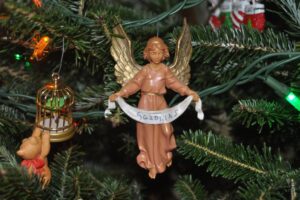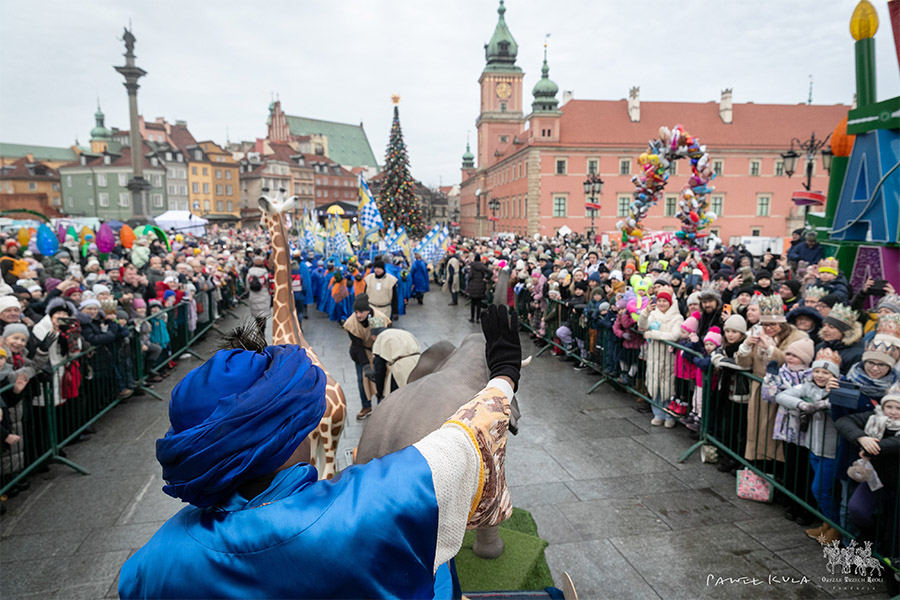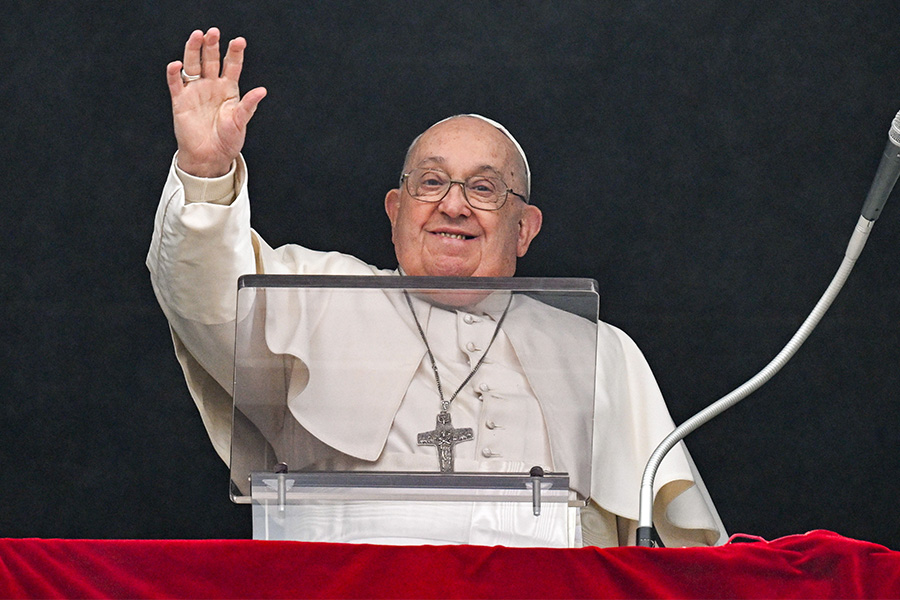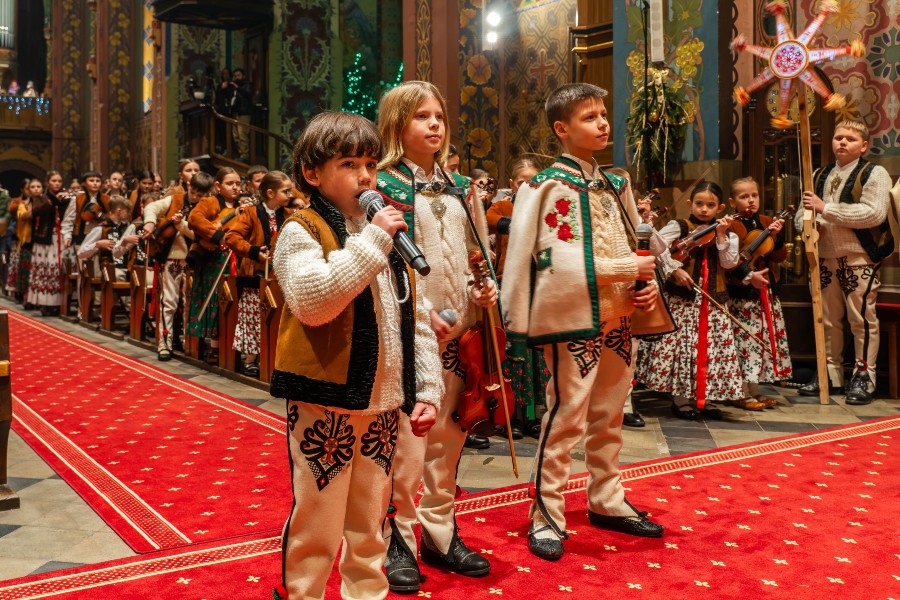Everyone loves “Silent Night” and “Joy to the World.” But there are plenty of other Christmas carols from across the globe that are just as beautiful, if not always as familiar. Here are some of my favorites, in no particular order. Write to me and tell me about yours!
Huron Carol
St. John de Brébeuf, a 17th-century French Jesuit missionary to the indigenous peoples of New France, wrote the lyrics to this unforgettable carol in the early 1640s. A master linguist, the priest composed the carol in the native language of the Huron (Wendat) people and set it to a version of an old French tune.
St. John Brébeuf and other Jesuits, known as “Black Robes” to the American Indians, would later be martyred along with many of the native people they helped to bring into the Catholic Church.
A version of Father Brébeuf’s carol was written in English by Jesse Edgar Middleton in the 1920s and remains popular in Canada today. It adapts the Christmas story to the Native American culture — substituting “chieftains” for wise men and a “ragged robe of rabbit skin” for swaddling clothes.
Whenever I hear this song, I picture Father Brébeuf and the early Huron faithful gathered together in North American forests to celebrate the birth of Christ in a way that embraces both their cultures. It’s a romanticized view, I know, but one that strives for the ideal of what Christmas should be about.
The following rendition of the “Huron Carol” by Heather Dale is the very best I’ve heard. It includes verses in Wendat, French and English and is undergirded by a steady drumbeat.
Polish Kolendy
As someone raised in a home that celebrated its Polish and Czech heritage, Christmas to me is incomplete without making pierogi and kolacky from scratch and listening to kolendy — Polish Christmas carols.
Kolendy have sweet, simple melodies that are both sentimental and incredibly charming. They often take the form of endearing lullabyes. For the last 50 years, Baltimore’s Polish-American community has led a procession of carolers through the streets of East Baltimore — singing traditional kolendy, along with other Christmas favorites.
When my Polish-speaking mother was nearing the end of her life after a battle with cancer, I made sure we piped kolendy into her room at Christmastime (even when she was not conscious) in the hopes it would trigger some fond memories growing up as the daughter of Polish immigrants.
As a parish organist for nearly three decades from the time I was 14 until I started having children of my own, I often used kolendy as meditation pieces and always played the lively “Dzisiaj w Betlejem” — “In Bethlehem” — as the Christmas postlude. Some of the wonderful cantors I worked with at St. Clare in Essex, Our Lady of Hope in Dundalk and the now-closed St. Michael in Fells Point and Holy Redeemer in Highlandtown, sang a few of these carols in Polish or others like them in Spanish, German, French and more.
Below, “Dzisiaj w Betlejem” tells of the great events of Christ’s birth, “Gdy Sie Chrystus Rodzi” represents the heavenly chorus of angels and “W żłobie leży” tells of worshipping the newborn king. Even if you are like me and don’t speak Polish, you’ll still be inspired by this great music.
French carols
French Christmas carols are lively and tend to stay with you long after you hear them. One of the most universally loved of these is “Angels We Have Heard on High.” Two of my favorites are “Il Est Ne, le Divin Enfant” or “He is Born, the Divine Child” (written in the 19th century ) and “Un flambeau, Jeannette, Isabelle” or “Bring a Torch, Jeaneatte Isabella” (written in the 16th century). I remember listening to the latter on my parents’ old stereo as a child. I came across “He is Born, the Divine Child” later and was taken with its joyful spirit. The tune is believed to come from an old Norman hunting song. I hear it on the radio a lot these days as it seems to be gaining a wider following.
Good King Wenceslaus
This carol is probably more familiar than most of the others I’ve mentioned. I’m including it because it’s a personal favorite. It tells the story of a 10th-century Bohemian duke who shows love and care for the poor. John M. Neale, an Anglican priest, wrote the lyrics in 1853, intending to encourage English children to show generosity on St. Stephen’s Day. The words are set to the tune of a 13th-century spring carol. My wife and I recently gave our children a gorgeously illustrated book based on this song that was published by Eerdmans Books for Young Readers. We love that they never seem to get tired of hearing us sing it to them.
Lo How a Rose E’er Blooming
Sung both during Advent and Christmas, this haunting German carol dates to the early 17th century. Although it can be difficult to sing, it is an uplifting piece that deserves more attention. Alex Stephens recorded himself singing all four parts of a beautiful arrangement of the song below.
Come, All Ye Shepherds!
This is probably one of the most popular Czech Christmas carols. Taken at a quick pace, it can be quite a tongue-twister. Last Christmas season, I often sang this one as the bedtime song for my children. At Christmas Day Mass at St. Pius X in Rodgers Forge, the organist played this as a prelude and I was happily surprised when my three-year-old tapped me on the shoulder and excitedly announced, “Daddy, they are playing the Shepherd Song!”
Email George Matysek at gmatysek@CatholicReview.org
Also see
Copyright © 2020 Catholic Review Media






